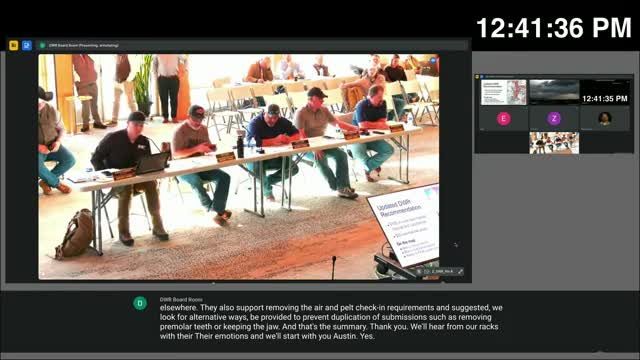Wildlife Council approves $100 coyote bounty in crucial areas despite funding debate
January 09, 2025 | Utah Department of Natural Resources, Utah Government Divisions, Utah Legislative Branch, Utah
Thanks to Excel Chiropractic and Scribe from Workplace AI , all articles about Utah are free for you to enjoy throughout 2025!

This article was created by AI using a video recording of the meeting. It summarizes the key points discussed, but for full details and context, please refer to the video of the full meeting. Link to Full Meeting
In the southern region, a motion was passed to increase the bounty for coyotes to $100 in crucial areas, while maintaining a bounty of $75 in non-critical regions. This decision received overwhelming support, passing with a vote of 8 to 1. The board expressed gratitude to Eric for his contributions to the discussion.
Conversely, the southeastern region sparked a more contentious debate. One board member raised concerns about the financial wisdom of the bounty program, suggesting that funds could be better allocated. A proposal to decrease the bounty to $25 in non-critical areas while raising it to $100 in crucial areas was put forth but ultimately failed with a vote of 5 to 3. Instead, the board settled on a compromise, voting 6 to 2 to keep the bounty at $50 in non-critical areas while increasing the amount in crucial areas to $100.
The meeting also highlighted a crucial point of clarification regarding the use of bounty funds. Chris, another board member, sought to confirm whether unspent bounty money could still be utilized by the division and the Utah Department of Agriculture and Food (UDAF) for targeted coyote control efforts. This question underscored the ongoing need for effective wildlife management strategies in the region.
As the meeting concluded, it was clear that the board remains committed to addressing the challenges posed by coyote populations while navigating the complexities of funding and resource allocation. The decisions made during this session will likely influence wildlife management practices in Utah for the foreseeable future.
Converted from Wildlife Board Meeting 01/9/2025 meeting on January 09, 2025
Link to Full Meeting
Comments
View full meeting
This article is based on a recent meeting—watch the full video and explore the complete transcript for deeper insights into the discussion.
View full meeting
